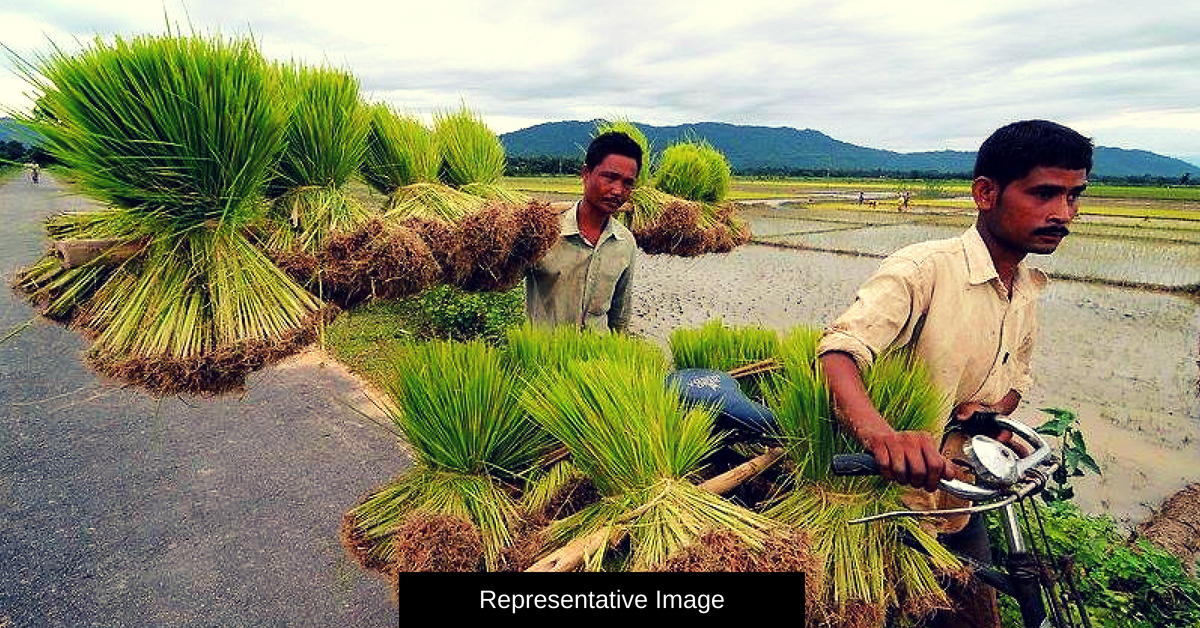Telangana Tribe Uses Leaves & Bamboo Mat to Grow Paddy, Saves Water & Time!
In their native language Gondi, the process is called ‘mande vatval,’ which means setting up a raised platform.

A rudimentary farming method practised by an Adivasi community residing in the Utnoor mandal of Adilabad district in Telangana, during the process of paddy farming, is not just organic but also time-saving!
Kothaguda is a tribal hamlet along the Godavari river that is home to the Raj Gonds, and generations of this community have cultivated traditional varieties of paddy and continue to do so.
However, unlike the standard way of raising paddy seedlings by planting seeds in a small patch of a wetland, they practice a unique process of seed germination that is suitable in even dry weather conditions.
The germination of seeds is derived with the help of teak and vavili (Vitex trifolia) leaves. And how they do it is even more interesting!

In their native language Gondi, the process is called ‘mande vatval,’ which means setting up a raised platform. First placing regular sized stones on the ground as platform measuring about 4-feet-long and wide, the farmers then fix thin wooden poles on top of the platform that ensures a smooth airflow from beneath.
“A bamboo mat is placed on the wooden poles on which a layer of teak leaves is arranged with perforations to let water drain out. The seeds of the regular variety of paddy are placed on the teak leaves which are then covered with a layer made up of leaves of vavili, called nirgudi in Gondi, and a top layer of teak leaves,” disclosed Athram Bhujang Rao, a Gondi farmer, to The Hindu.
You may also like: Biodegradable Paper from Paddy Straw? This Project By IIT Delhi Is Doing It!
The arrangement can contain close to 30 kg of paddy seeds, which is then enclosed by heavy flat stones for compactness. Once this is set up, the seeds are watered every morning and evening for three days to keep the heat generated by the nirgudi leaves at bay.
According to farmer Ada Gangaram, the seeds begin to germinate by the second day itself and can be then raised in conventional nurseries.
“This is a wonderful way of going about the initial process of paddy cultivation as it saves about 8 to 10 days for the farmer while the transplantation activity is undertaken. It also helps the farmers during the beginning of monsoon season when there is very little water available for raising nurseries,” said C Narsingu, a retired Agriculture Officer in Adilabad.
(Edited by Gayatri Mishra)
Like this story? Or have something to share?
Write to us: [email protected]
Connect with us on Facebook and Twitter.
NEW: Click here to get positive news on WhatsApp!
If you found our stories insightful, informative, or even just enjoyable, we invite you to consider making a voluntary payment to support the work we do at The Better India. Your contribution helps us continue producing quality content that educates, inspires, and drives positive change.
Choose one of the payment options below for your contribution-
By paying for the stories you value, you directly contribute to sustaining our efforts focused on making a difference in the world. Together, let’s ensure that impactful stories continue to be told and shared, enriching lives and communities alike.
Thank you for your support. Here are some frequently asked questions you might find helpful to know why you are contributing?


This story made me
-
97
-
121
-
89
-
167











